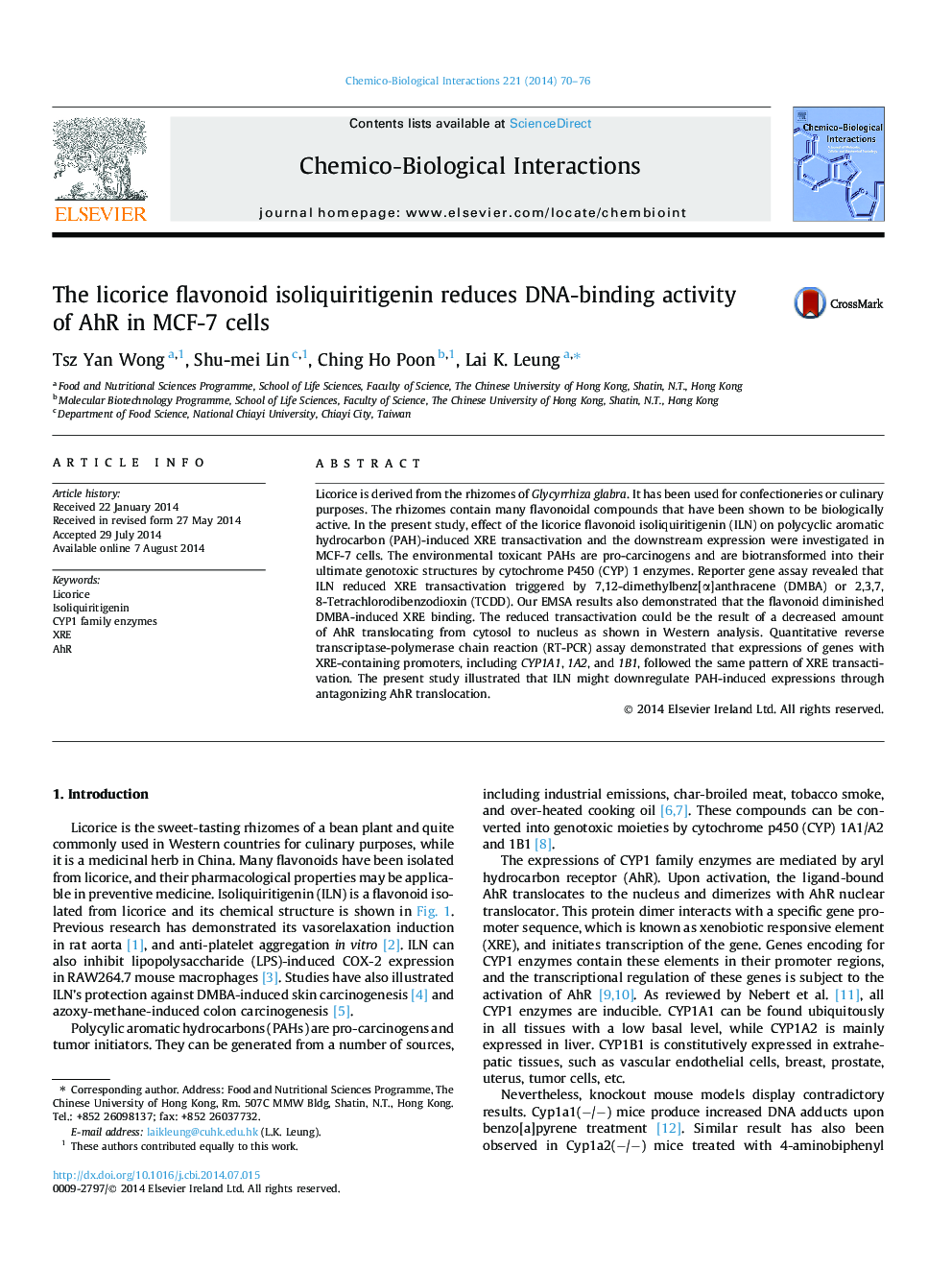| Article ID | Journal | Published Year | Pages | File Type |
|---|---|---|---|---|
| 2580405 | Chemico-Biological Interactions | 2014 | 7 Pages |
•The licorice flavonoid isoliquiritigenin downregulates CYP1 enzymes.•Isoliquiritigenin suppresses XRE transactivation.•Isoliquiritigenin prevents the translocation of AhR to the nucleus.
Licorice is derived from the rhizomes of Glycyrrhiza glabra. It has been used for confectioneries or culinary purposes. The rhizomes contain many flavonoidal compounds that have been shown to be biologically active. In the present study, effect of the licorice flavonoid isoliquiritigenin (ILN) on polycyclic aromatic hydrocarbon (PAH)-induced XRE transactivation and the downstream expression were investigated in MCF-7 cells. The environmental toxicant PAHs are pro-carcinogens and are biotransformed into their ultimate genotoxic structures by cytochrome P450 (CYP) 1 enzymes. Reporter gene assay revealed that ILN reduced XRE transactivation triggered by 7,12-dimethylbenz[α]anthracene (DMBA) or 2,3,7,8-Tetrachlorodibenzodioxin (TCDD). Our EMSA results also demonstrated that the flavonoid diminished DMBA-induced XRE binding. The reduced transactivation could be the result of a decreased amount of AhR translocating from cytosol to nucleus as shown in Western analysis. Quantitative reverse transcriptase-polymerase chain reaction (RT-PCR) assay demonstrated that expressions of genes with XRE-containing promoters, including CYP1A1, 1A2, and 1B1, followed the same pattern of XRE transactivation. The present study illustrated that ILN might downregulate PAH-induced expressions through antagonizing AhR translocation.
